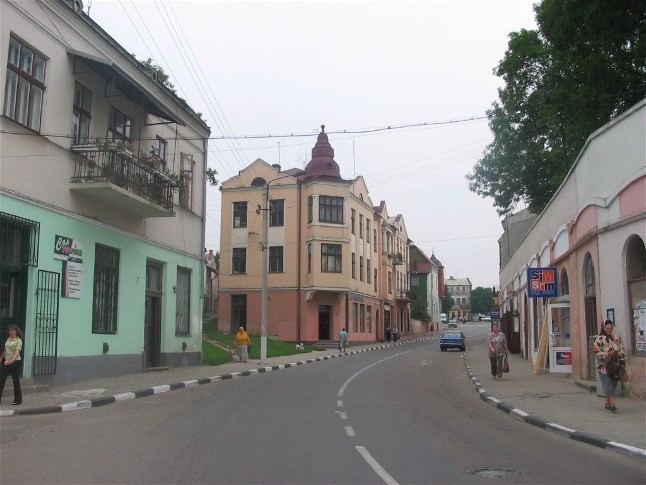Population 7,983 (2016) Team FC Rohatyn | Founded 12th century Local time Tuesday 3:57 PM | |
 | ||
Website www.rohatyn.ronet.com.ua Weather 14°C, Wind SW at 13 km/h, 61% Humidity | ||
Rohatyn (Ukrainian: Рогатин, Polish: Rohatyn, Yiddish: ראהאטין) is a city located on the Hnyla Lypa River in Ivano-Frankivsk Oblast, in western Ukraine. It is the administrative center of Rohatyn Raion (district). Population: 7,983 (2016 est.).
Contents
Map of Rohatyn, Ivano-Frankivska, Ukraine
Prior to World War II the town was located in Poland.
Name
It was first mentioned in historical documents in 1184 as a part of the Kingdom of Galicia–Volhynia. Its name seems to be derived from Ruthenia, the name of the region of the location. However, the town emblem has a horn of a deer which gives the first part of the Slavish name of Rohatyn or Rogatyn - "Rog" ("Horn"). The second part "Tyn" can be connected with a word which means "Stacket". Together these two words give us "Horn Stacket".
Also there is a legend connected with the image of the deer horn of the town emblem. It is said that a wife of the Duke Jaroslav Osmomysl, being lost in a forest, met a deer. She survived by following the deer out of the forest. A fort was built with name "Rogach" ("Deer") on the place where the duchess supposedly stepped out of the forest.
The town name also can be connected with the Slavish word "Rogatyna" which means a heavy spear for martial arts or bear hunting ("Bear Spear"). It was first mentioned in 1149 (Laurentian Chronicle). In Polish heraldry "Rogacina" means "Broadhead".
History
In 1415, under Polish rule, it was granted Magdeburg rights, and subsequently developed into an important trading and manufacturing town. In 1520, the region was attacked by Crimean Tatars, Roxelana, a native of Rohatyn, was captured there and sold to the Ottoman Sultan Suleiman the Magnificent of which she became first concubine, then haseki sultan and finally official wife. In the 16th century a renowned school of icon painting arose in Rohatyn, and in the 1580s an Orthodox brotherhood was founded obtaining the stauropegion (a monastery exempt from the control of the local bishop) status. After the First Partition of Poland in 1772, Rohatyn was annexed by Austria, and became a county center. A Ukrainian gymnasium was established there in 1909, and a minor theological seminary in 1931. In 1910, half of the town population was Jewish. During the interwar period the town was under Polish rule. In 1939, it became part of Soviet Ukraine and was granted city status. During World War II, 99 percent of the 3000 strong Jewish population were murdered in The Holocaust.
Today it is an important highway junction; 26 percent of its inhabitants work in the transportation industry.
